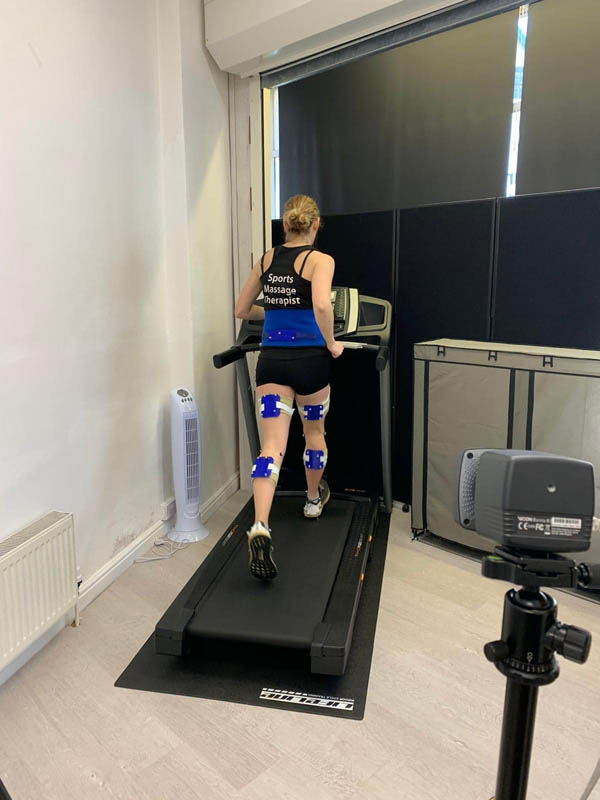One of the primary goals for runners, regardless of ability, is trying to stay injury free. Many clinicians and speciality retailers for the management & prevention of lower limb injury consistently advise footwear.
The commercially popular system often seen in running speciality stores with 2D gait analysis – filming from behind and advising motion control features based on foot pronation – has not translated into clinically meaningful outcomes. What run stores provide is NOT gait analysis, it’s a shoe analysis and in the main they are only assessing from the frontal plane and looking at just one aspect of foot movement (pronation), which is only a very small risk factor of injury. Gait analysis requires more than just a few seconds on a treadmill.
2D analysis from behind, as provided by most sports shops, only provides information in the frontal plane. It misses so much of what is actually going on in gait and what may be contributing risk factors to injury. Runners often talk about foot pronation as some sort of diagnosis in itself, often reporting it’s the cause of all their injuries etc. Yes foot pronation may play a part in some running related injuries, but the word’may’ needs to be empathised. There is no definition to determine at what point pronation becomes pathological as it is a healthy movement required for energy absorption and load adaptation. Evidence over the last 8 years has shown that foot pronation is only a small risk factor with regards to running related injury.
So why are some speciality run stores still providing dated misinformation to runners? We need to be moving away from just looking at the foot and ankle and looking at the whole lower limb picture. 3D gait analysis provides this. We also need to be moving away from the standard categorisation of running shoes and look at the geometry of shoes, which can also have a profound effect on gait. With running shoes going through major changes over the last couple of years, the traditional categorisation of neutral, support and motion control does not exist as depending on the medial or lateral flaring, heel to toe differential, midsole stack height, midsole material properties, guide rails, longitudinal bending stiffness, to name a few, will all affect a runners gait.
At Run Lab Clinics all three planes of motion, frontal, sagittal and transverse are assessed from the hip down along with assessing torso position and arm movement if required. Through analysing the relationships or patterns during gait of the pelvis, hip, knee, lower leg, foot and ankle in relation to these features, we can not only better understand possible root causes of injury but how the interaction of footwear and foot orthoses (if used) impacts on joint motion in either a positive or negative way. This provides a more accurate picture with regards to injury prevention and performance allowing for better choices regarding footwear and foot orthoses.
If you would like more information gait analysis at Run Lab Clinics, or if you have any questions, feel free to contact me on the details below.
Matt Hart BSc (Hons), MChS, HCPC
Sports Podiatrist
Mobile: 07535924049
Email: matt@runlabclinics.com
Website: www.runlabclinics.com







